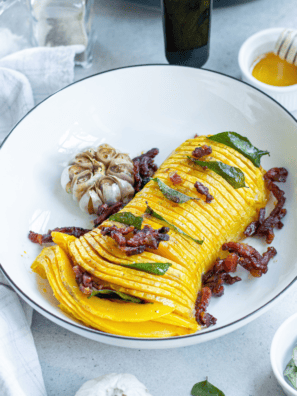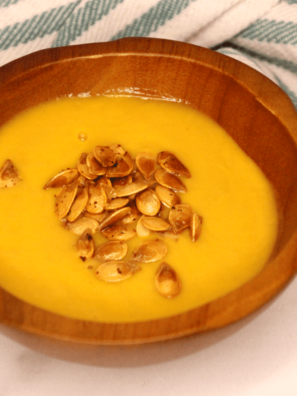This crispy Air Fryer Kabocha squash is a great healthy side dish for any meal.
Kabocha squash is incredibly healthy and is packed with vitamins and minerals, and is pretty versatile too. This easy and low carb Air Fryer recipe is perfect if you want to enjoy the squash without putting in too much effort.
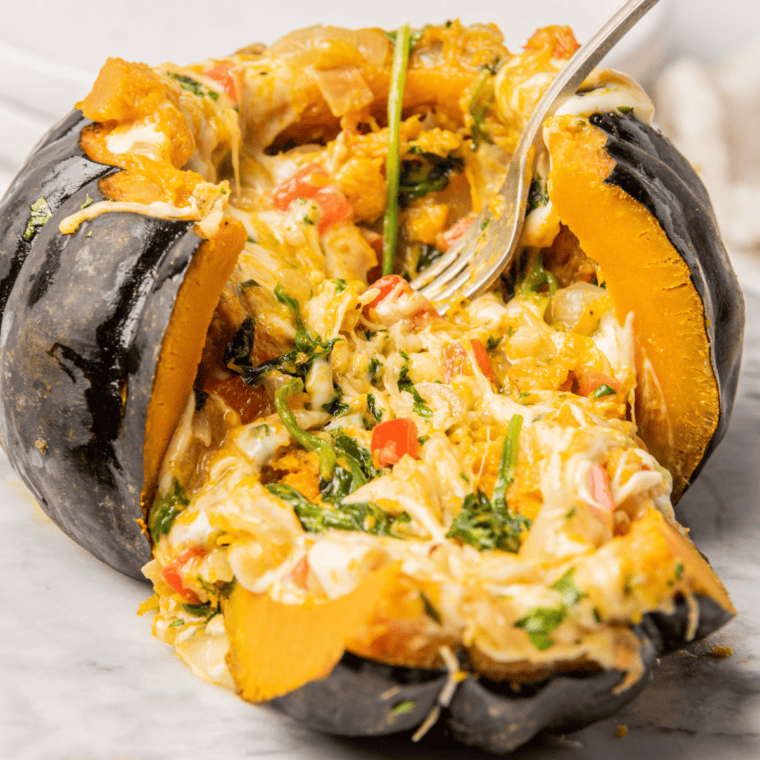
My Air Fryer has seen its fair share of squashes. From my favorite crispy Air Fryer squash and roasted acorn squash to Air Fryer spaghetti squash and butternut squash noodles– I’ve tried them all.
This time, I wanted to transform a Kabocha squash into something delicious, healthy and versatile. And so I did.
Why You’ll Love this Recipe
- Super easy: Making air fried Kabocha squash is incredibly easy. All you’ll need is a few simple ingredients and your trusty Air Fryer.
- Customizable: Use different seasonings, spices and fillings to customize the dish to your liking.
- Healthy: Squash is an incredibly healthy and versatile dish that you can cook in lots of ways. Fill it up with a meaty filling to enjoy it as a main, or serve it as a healthy side. Air frying makes it even better!
- Delicious: The sweetness of the squash beautifully complements the salty and spicy kick of the seasonings and fillings. It’s truly a delicious side!
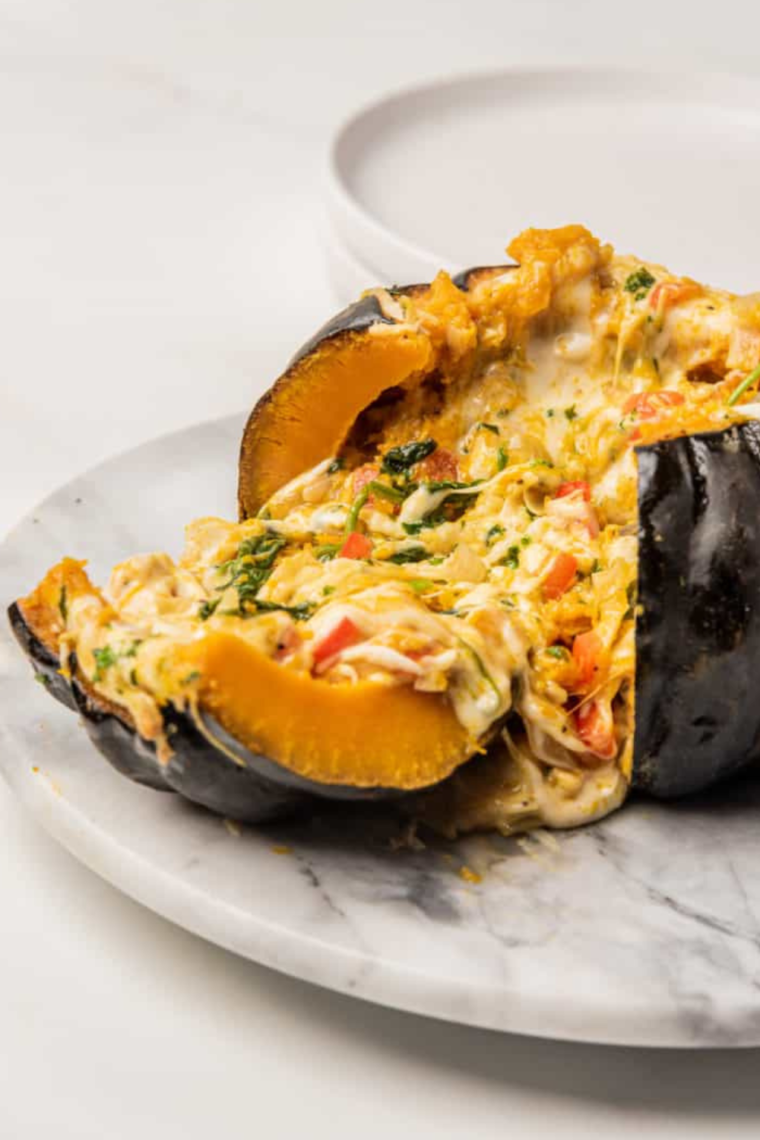
Ingredients For the Air Fryer Kabocha Squash Recipe
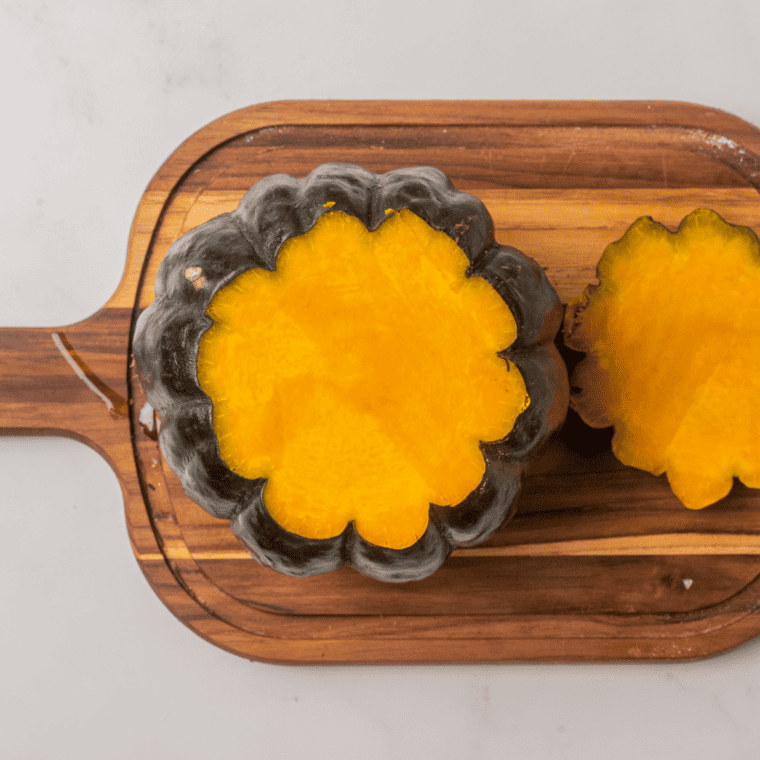
- Kabocha squash: Choose fresh, firm and ripe squash that has a creamy, orange flesh.
- Olive oil: To help the squash get that perfectly crisp exterior when air fried.
- Fillings: Get creative and use chopped onion, garlic, red bell peppers, spinach and mozzarella cheese.
- Seasonings: I used just a simple mix of salt, black pepper, garlic powder and paprika.
- Herbs: Fresh herbs add a lot of freshness and brightness. Use any fresh herb of your choice.
- Cheese: I used Parmesan cheese for that salty, savory and nutty deliciousness. Feel free to use any other kind of cheese of your choice.
Variations & Substitutions
- To make a vegan filling for the stuffed Kabocha squash, use mushrooms, onions, cranberries, rice and walnuts. Skip adding the cheese or just use some nutritional yeast if you want that nutty, cheesy flavor.
- Seasoned ground beef and mushrooms topped with cheese can also be an amazing high protein filling for the kabocha squash.
- For a lean meat choice, use ground chicken or ground turkey and season it using your favorite seasoning. I love using my blackened seasoning mix.
- To make a vegetarian version of the dish, use black beans or chickpeas along with your choice of veggies and spices as the filling. Don’t forget the cheese!
- Make the dish spicy by adding some red pepper flakes, paprika or cayenne into the filling.
- Sometimes, I also end up using my leftover queso chicken taco filling inside the squash, and it turns out amazing. You can try using almost any kind of seasoned chicken or meat here.
- You can also use your leftover chili as the filling for the Kabocha squash- it is such a unique way of enjoying chili.
How to Make Air Fryer Kabocha Squash
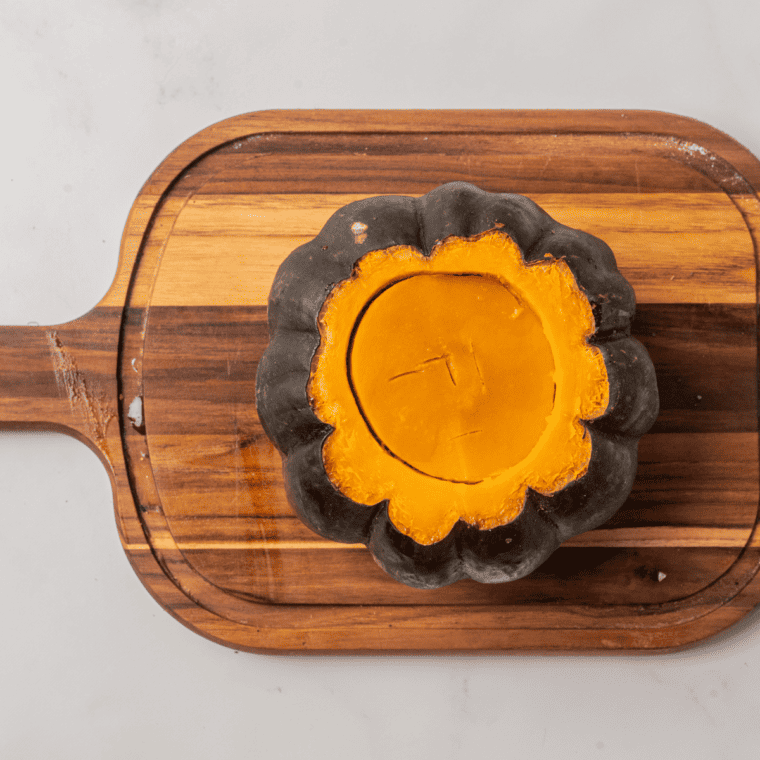
Prep squash: Place the squash inside your Air Fryer basket and cook for 25-30 minutes. Once cooked, get it out and let it sit for a few minutes.
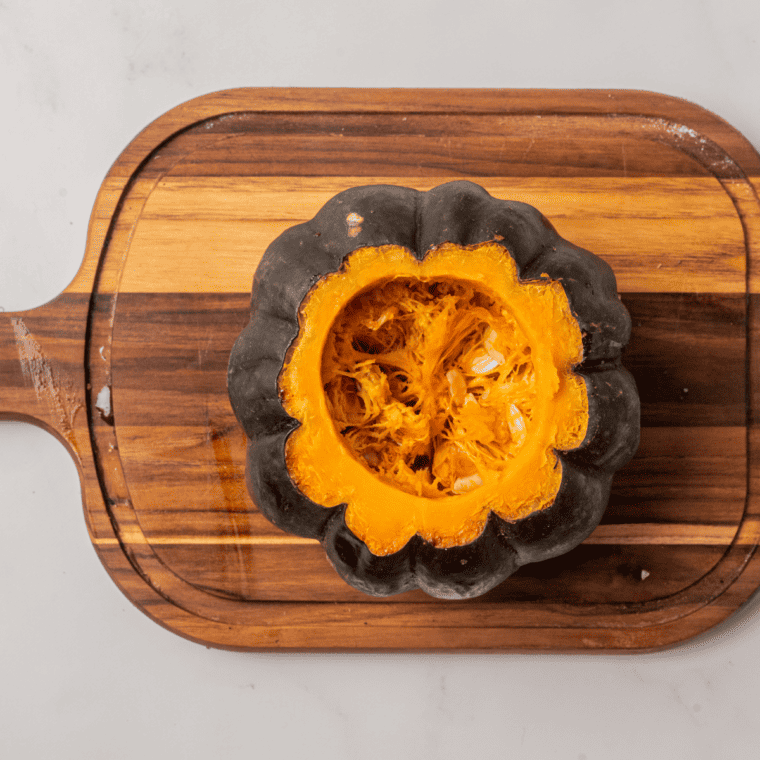
Scoop time: Cut the top off the squash and scoop out the seeds and pulp, creating a cavity in the center.

Prep filling: In a large skillet, heat olive oil over medium heat and saute the onion and garlic for a few minutes. Now add the spinach, bell pepper and saute again. Season with your favorite spices.
Season the squash: Season the inside of the squash with salt, pepper and a bit of olive oil. Prepare the stuffing in a skillet.
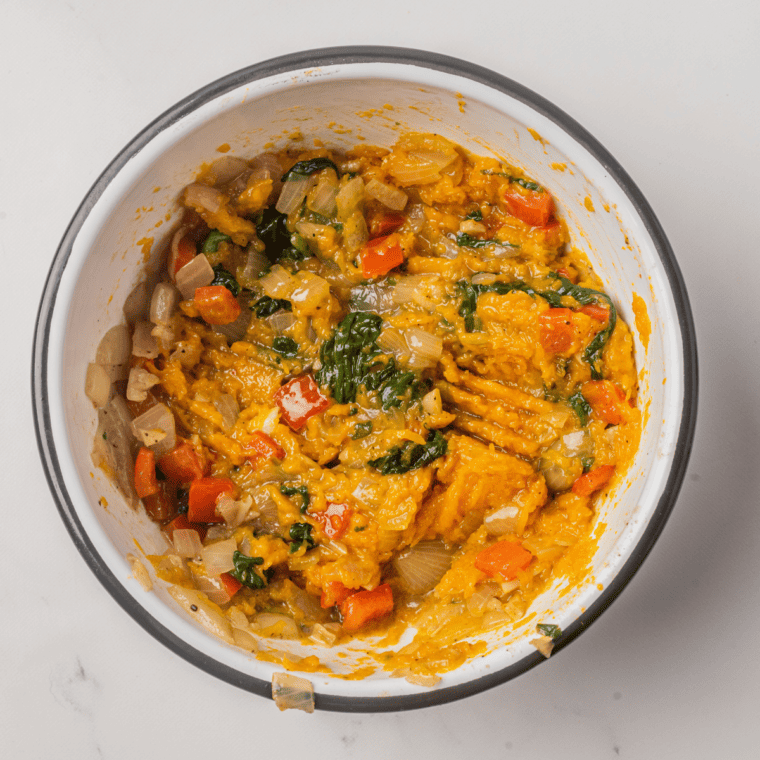
Air fry time: Spoon the filling into the cored Kabocha squash and top with cheese. Return this to the Air Fryer and cook for 5-7 minutes until the cheese is all melty.
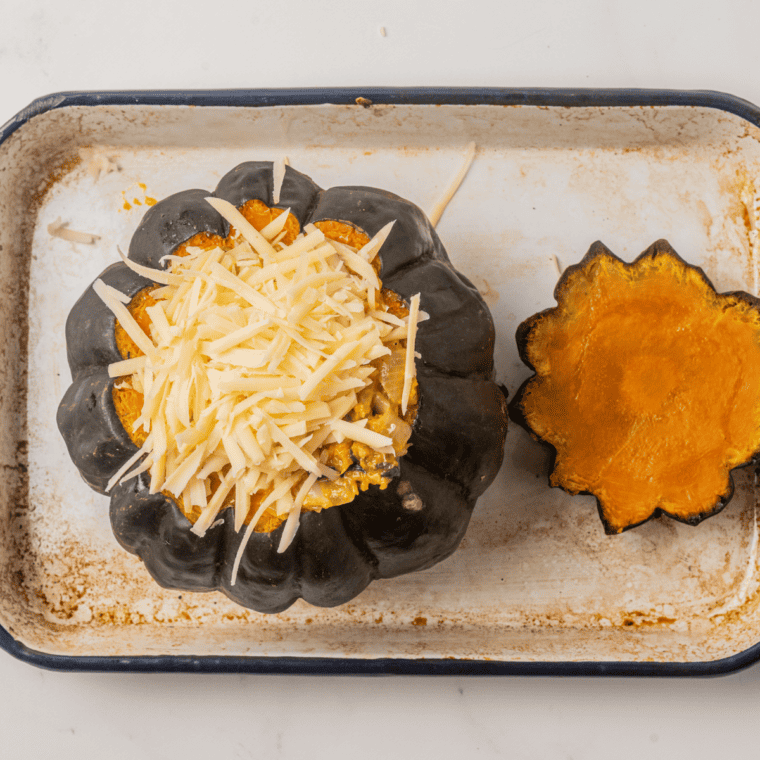
Tips & Tricks to Make Kabocha Squash in the Air Fryer
- Depending on what you prefer, you can choose to peel the squash or leave the skin on before you air fry it.
- Remember to wash and clean the squash thoroughly, and pat it dry with paper towels to remove all moisture before you air fry it.
- To help it crisp up, you can also cover it with some olive oil.
- Depending on the kind of Air Fryer you’re using and the size of the squash, the cooking time can range between 30-40 minutes.
- I would recommend using a medium sized squash- one that can easily fit inside your Air Fryer basket.
- Allow the stuffed Kabocha squash to rest for a few minutes before you serve it.
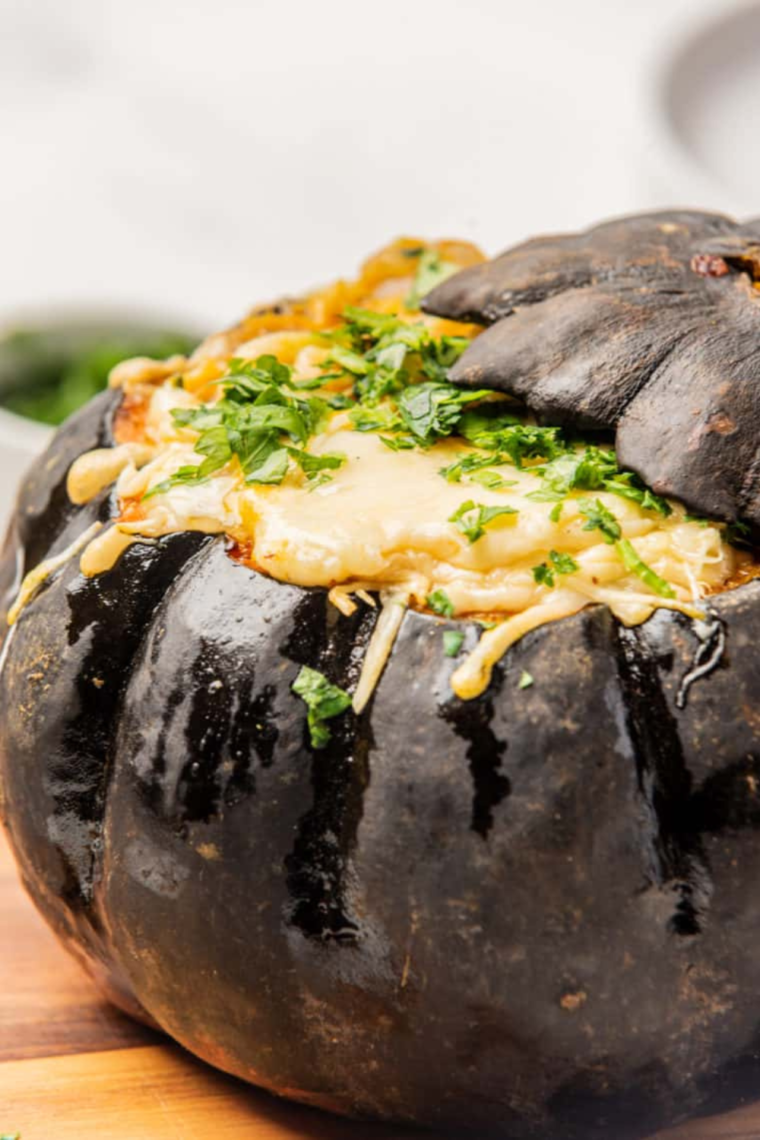
Storage Instructions
Refrigeration: Store your leftover stuffed Kabocha in an airtight container in the refrigerator for 2 days. Remember that refrigerating it can cause the squash to lose its crispiness.
Reheating: The best way to reheat this kabocha squash is to air fry it for a few minutes until it is nice and warm.
Serving Ideas & Suggestions
Serve the Kabocha squash while it is nice and warm, along with a side of your choice. I love serving this with my eggplant chips or crispy air fried green beans.
On days when I’m keeping the filling simple, I like serving the squash as a side dish with any meaty main dish like air fried Albanian meatballs or my favorite Instant Pot Korean beef short ribs.
FAQs
Do I need to peel kabocha squash for this recipe? It’s not actually needed. The skin on the squash becomes soft and tender when cooked, and is edible.
Is kabocha squash keto-friendly? Kabocha squash is slightly lower in carbs than other kinds of squashes, but it still has a significant carb content, and is not a good option for those on a very strict keto diet.
What other veggies can I add to the stuffing for the Kabocha squash? You can use practically any sauteed veggies you like. Mushrooms, carrots, zucchini, asparagus, kale, tomatoes and beans are all excellent choices.

More Air Fryer Recipes
- AIR FRYER BEETS
- AIR FRYER SPAGHETTI SQUASH
- EASY AIR FRYER HASSELBACK BACON AND BLEU CHEESE POTATOES
- AIR FRYER ITALIAN STUFFED MUSHROOMS
- AIR FRYER ROASTED CARROTS
Don’t Forget To Pin!
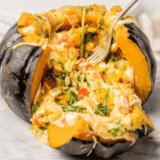
Air Fryer Kabocha Squash
Description
Ingredients
- 1 kabocha squash
- 6 cups spinach
- 1 cup onion, chopped
- 1 clove garlic, minced
- 2 cups mozzarella cheese, diced
- 2 cups Parmesan Cheese, shredded
- 1/2 cup red bell pepper, chopped
- 1/2 teaspoon Kosher salt, or to taste
- 1/2 teaspoon black pepper, or to taste
- 1/2 teaspoon Nutmeg, to taste
- 2 tablespoons Olive oil
- 1/2 tablespoons Fresh parsley, chopped (optional)
Instructions
- Place the squash into the air fryer basket, and cook for 25-30 minutes. Remove and let sit for a couple of minutes. Cut off the top of the kabocha squash, scoop out the seeds, and pulp with a spoon.
- Drizzle the inside of the squash with olive oil, salt, and black pepper. Prepare the stuffing. In a large skillet, heat some olive oil over medium heat.
- Add the chopped onion and minced garlic to the skillet and sauté until the onion is translucent. Add the spinach and bell pepper to the skillet and sauté until wilted. Season the spinach with salt, black pepper, and nutmeg to taste.
- Combine the kabocha pulp with the onion and spinach stuffing in a medium bowl. Stuff the spinach and cheese mixture into the cavity and top with parmesan cheese.
- Return the stuffed squash to the air fryer and set the cooking time for 5-7 minutes or until the cheese is melted and bubbly.
- Garnish with chopped fresh parsley, if desired.
Equipment
- Cooking Spray
- Parchment Paper, optional
Notes
- Add some cooked ground beef or sausage to the stuffing to make it more filling.
- When scooping out the seeds and pulp from the kabocha squash, be sure to leave a thick layer of flesh intact so the squash can hold the stuffing.
- Air Frying Kabocha squash brings out its natural sweetness and adds flavor to the dish. To save time, you can roast the squash a day ahead and store it in the refrigerator until ready to use.
- If you want a crispy top, sprinkle some breadcrumbs on top of the stuffed squash before baking it.
- You can use the leftover roasted kabocha squash in salads or soups.
- You can use cinnamon or allspice instead for a slightly different flavor if you don’t have nutmeg.
- You can add chopped walnuts or pecans to the stuffing for added crunch and flavor.
Nutrition
Share this recipe
We can’t wait to see what you’ve made! Mention @forktospoon or tag #forktospoon!


